





| Hummingbird Hawk-moth (Macroglossum stellatarum (Linnaeus 1758)) |






|
|
Scientific name: Macroglossum stellatarum (Linnaeus 1758) Common name: Hummingbird Hawk-moth French name: Moro sphinx Order: Lepidoptera Suborder: Heterocera Family: Sphingidae Subfamily: Macroglossinae Wingspan: 40-50 mm. Biotope: Near nectar-rich flowers. Geographic area: All Europe and all Asia in Summer, North Africa. It only survives in the warmer temperate areas in Winter. It migrates to the North in Spring. Flight time: April to October, more frequent in July-August. Number of generations : 2 Caterpillar: Pale green with green and yellow lines and red spots. Host plant: Bedstraw (Galium sp.) and Red Valerian (Centranthus ruber). |
The Hummingbird Hawk-moth is a dayflying moth. You can usually see it gathering nectar with its long proboscis during hovering flight. That why it got its common name "Hummingbird Hawk-moth". The body is greyish-brown with white spots on the sides of the abdomen. The forewings are dull brown with black crosslines. The hindwings are orange. |
| [To know more about the Hummingbird Hawk-moth] [Next picture] [Top] |
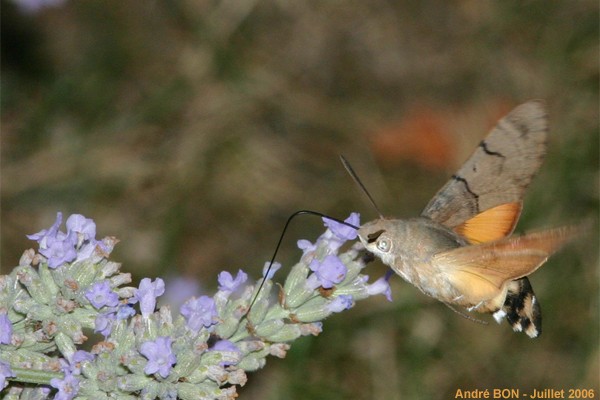
|
The use of flashlight allows to increase the depth of field by using a smaller aperture. The exposure time is given by the very short flashlight duration. The wings are visible on the picture though you can't see them when you look at the flying moth. |
| [To know more about the Hummingbird Hawk-moth] [Next picture] [Previous picture] [Top] |
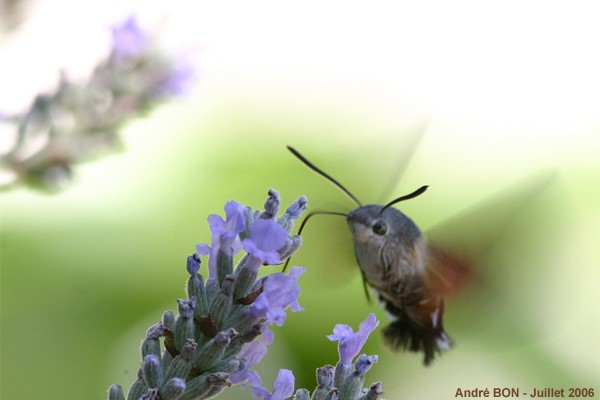
|
I took this picture without flash. I need bigger lenses to catch more light and avoid moving blur. |
| [To know more about the Hummingbird Hawk-moth] [Next picture] [Previous picture] [Top] |
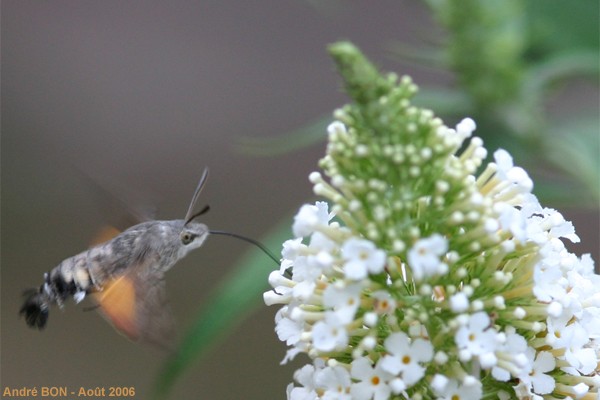
|
Early August, 1 or 2 Hummingbird hawk-moths are used to visiting the buddleia every day. This is very convenient to take pictures and to try various camera settings. |
| [To know more about the Hummingbird Hawk-moth] [Next picture] [Previous picture] [Top] |
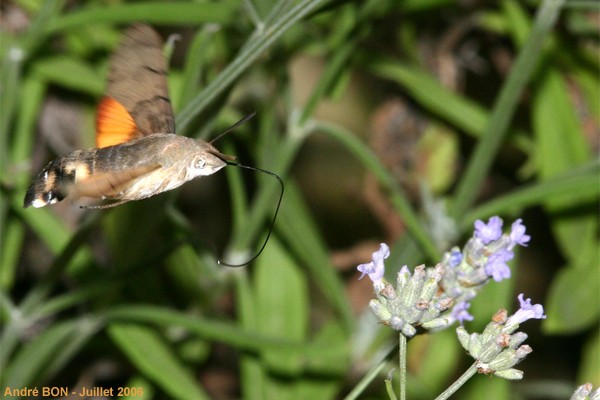
|
The Hummingbird Hawk-moth does not completely roll its proboscis up when flying from a flower to another. |
| [To know more about the Hummingbird Hawk-moth] [Next picture] [Previous picture] [Top] |
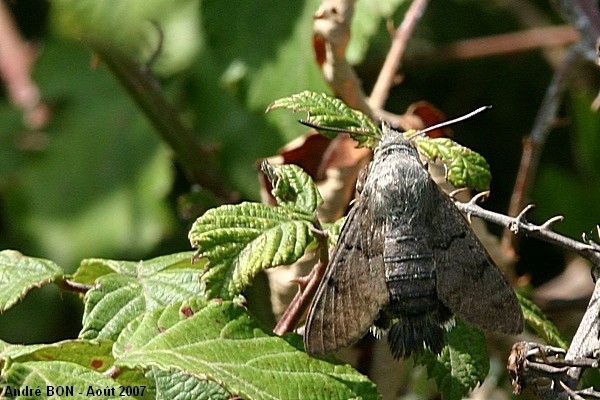
|
I have at least observed one landed Hummingbird Hawk-moth! |
| [To know more about the Hummingbird Hawk-moth] [Previous picture] [Top] |
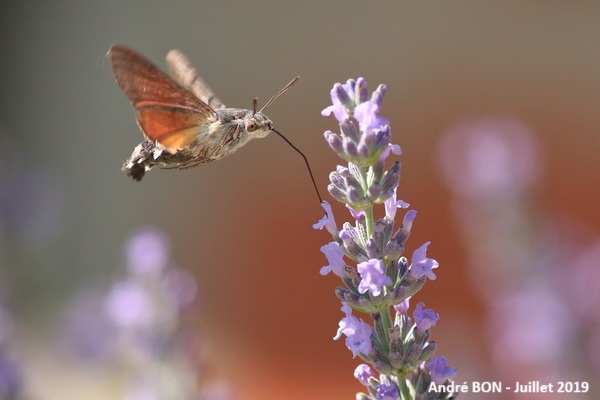
|
When the light conditions are good it is not very difficult to photograph the Hummingbird Hawk-moth in flight. It often returns to the same place, you just have to be ready and be a little patient. |